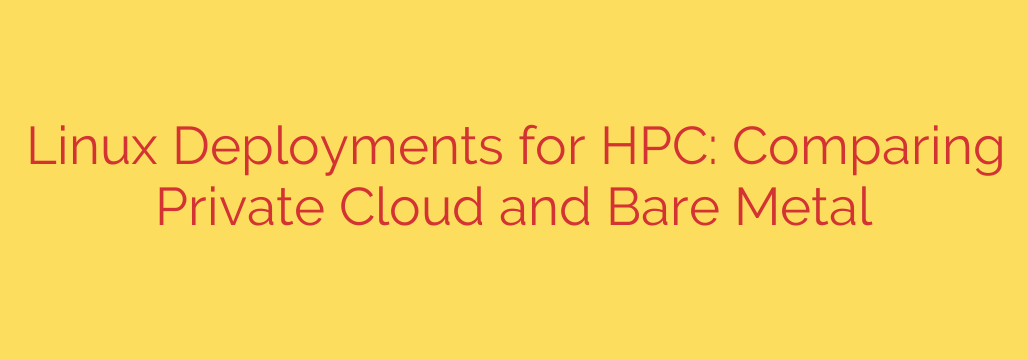
Deploying High-Performance Computing (HPC) workloads effectively on Linux environments presents a fundamental infrastructure decision: opting for bare metal servers or leveraging a private cloud architecture. Each approach offers distinct advantages and challenges tailored to specific organizational needs and computational demands.
Bare metal deployments represent the traditional model, providing direct access to hardware resources. This offers the potential for maximum performance, as there is no virtualization layer introducing overhead or latency. Organizations gain complete control over the hardware, operating system, and software stack, allowing for deep customization and fine-tuning for specific applications. For computationally intensive tasks requiring absolute speed and predictable resource isolation, bare metal remains a compelling choice. However, managing bare metal infrastructure can be complex, demanding significant operational overhead for provisioning, configuration, maintenance, and scaling. Scalability can be a bottleneck, often requiring manual processes and longer lead times to deploy new resources. The initial capital expenditure (CAPEX) for hardware acquisition can also be substantial.
In contrast, private cloud deployments build upon virtualization technologies to create a shared pool of compute, storage, and networking resources accessible on demand. This model emphasizes flexibility and agility. Resources can be provisioned rapidly, allowing for quicker turnaround times for researchers and engineers. Scalability is significantly enhanced, as resources can often be scaled up or down programmatically based on workload needs. The management of underlying infrastructure is often abstracted, simplifying operations and potentially reducing the need for specialized hardware expertise compared to bare metal. Resource pooling can lead to improved utilization rates across different projects. However, the virtualization layer can introduce a slight performance overhead compared to bare metal. Ensuring consistent and predictable performance in a multi-tenant private cloud environment requires careful planning and resource management. While initial CAPEX might be lower or spread out, operational expenses (OPEX) associated with the cloud software and management tools can be significant.
The optimal choice hinges on several factors: the nature of the workloads, the organization’s budget constraints, scalability requirements, and the available internal expertise. Workloads demanding the absolute lowest latency and highest raw performance might still favor bare metal. Those requiring rapid provisioning, dynamic scaling, and simplified management often benefit more from a private cloud. Understanding these trade-offs is crucial for building an HPC infrastructure that is not only powerful but also efficient, cost-effective, and adaptable to future computational challenges.
Source: https://www.horizoniq.com/blog/linux-high-performance-computing/








